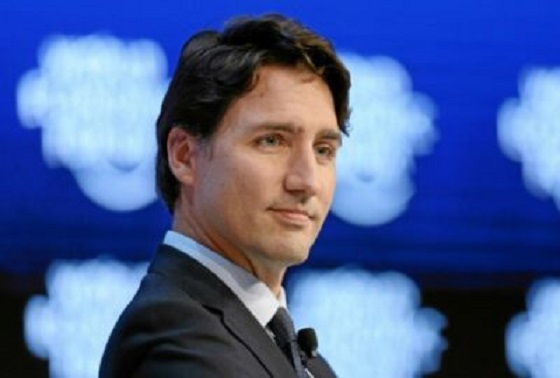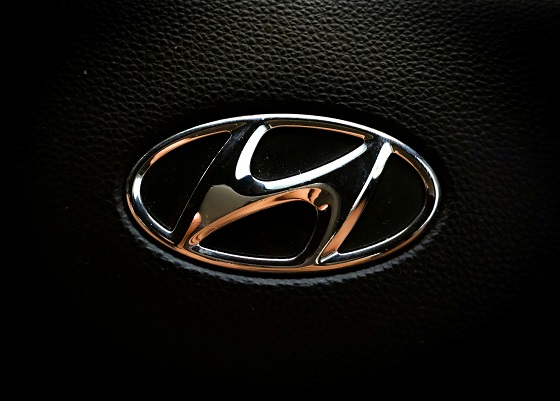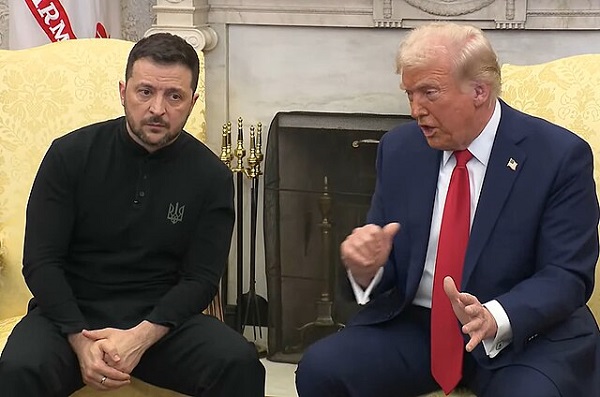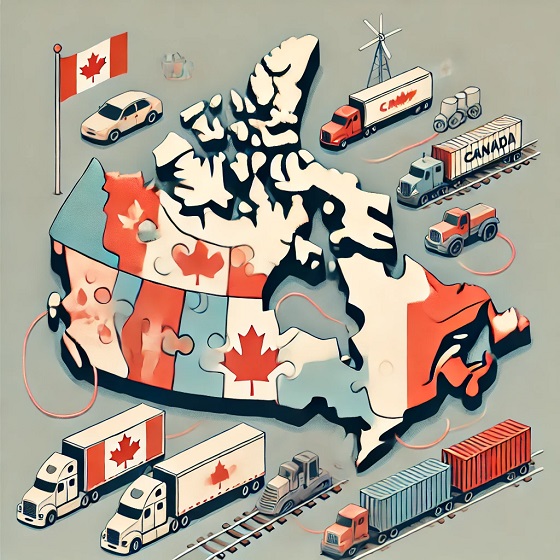Automotive
Ottawa’s tariffs undercut Ottawa’s EV mandate

From the Fraser Institute
Asian countries such as China and Japan were not particular threats to prior automotive markets because North America’s massive and diverse internal combustion vehicle markets were capable of relatively lower-cost production of superior quality vehicles. That’s not shaping up to be the case for EVs, which are vastly more expensive coming off North American assembly lines than in China and other Asian countries.
Seemingly every week, Canada’s electric vehicle (EV) transition policy framework grows more incoherent. The goal of Canada’s EV policy is to ensure all new light-duty vehicle sales in Canada are zero-emission vehicles (ZEVs), with a strong emphasis on battery-electric vehicles, by 2035.
The latest incoherence is Prime Minister Trudeau’s announcement of 100 per cent tariffs on Chinese EV imports and 25 per cent tariffs on Chinese steel and aluminum imports (the Canada needs to build EVs). This will directly undercut the government’s EV transition targets by denying Canadians access to affordable electric cars.
The stated rationale for the tariffs is, according to Finance Minister Chrystia Freeland, that the “Chinese are trying to corner the North American EV market by dumping subsidized vehicles into it” and that “China has an intentional, state-directed policy of overcapacity and oversupply designed to cripple our own industry” so “we simply will not allow that to happen to our EV sector.” And arguably, some of that is probably reasonable.
Tariffs are generally understood as protectionist mechanisms, designed to shield domestic industries from lower-cost foreign competition by making imported goods more expensive. Additionally, they can serve as punitive measures to penalize countries for hostile economic or political actions. By limiting access to one’s markets, tariffs can reduce the profits of the targeted country, thereby pressuring it to alter behaviours or policies. When imposed against countries intentionally sabotaging markets, tariffs may be considered a legitimate response.
But tariffs on China will also hurt Canadians by keeping lower-cost goods out of our market, leaving them with only higher-priced goods and services provided by protected domestic industries that need not fear price competition and thus feel little pressure to lower the prices for their goods and services.
And this is part of the incoherence of the new Trudeau tariff policy. The Trudeau EV mandates are set to create, in essence, a monopoly on the types of automotive technologies (again, EVs) allowed to be used in Canada, which other countries can manufacture more cheaply than domestic manufacturers. Asian countries such as China and Japan were not particular threats to prior automotive markets because North America’s massive and diverse internal combustion vehicle markets were capable of relatively lower-cost production of superior quality vehicles. That’s not shaping up to be the case for EVs, which are vastly more expensive coming off North American assembly lines than in China and other Asian countries.
By driving up the costs of buying EVs in Canada, the Trudeau government will directly undercut its EVs-by-2035 mandate. If people can’t afford EVs, as most currently cannot, the EV mandate targets are doomed. People will simply hold their old internal-combustion vehicles for longer. This trend is already observable in the United States where new vehicles have become more expensive. Americans are holding on to their vehicles longer than ever, with the average vehicle age reaching 13.6 years.
The Trudeau government’s highest priority has been the war on climate change, which various government leaders in Canada and around the world have proclaimed the greatest threat to people and the planet in human history. But if the government is sincere about this, then the priority should be to maximize Canadians’ access to cheaper EVs, and the prime minister should be largely indifferent to where Canadians choose to source those EVs. Indeed, he should urgently want low-cost EVs available to Canadians for there to be any hope of achieving his all-EV by 2035 goal.
Author:
Automotive
Canadians’ Interest in Buying an EV Falls for Third Year in a Row

From Energy Now
Electric vehicle prices fell 7.8 per cent in the last quarter of 2024 year-over-year, according to the AutoTader price index
Fewer Canadians are considering buying an electric vehicle, marking the third year in a row interest has dropped despite lower EV prices, a survey from AutoTrader shows.
Forty-two per cent of survey respondents say they’re considering an EV as their next vehicle, down from 46 per cent last year. In 2022, 68 per cent said they would consider buying an EV.
Meanwhile, 29 per cent of respondents say they would exclusively consider buying an EV — a significant drop from 40 per cent last year.
The report, which surveyed 1,801 people on the AutoTrader website, shows drivers are concerned about reduced government incentives, a lack of infrastructure and long-term costs despite falling prices.
Electric vehicle prices fell 7.8 per cent in the last quarter of 2024 year-over-year, according to the AutoTader price index.
The survey, conducted between Feb. 13 and March 12, shows 68 per cent of non-EV owners say government incentives could influence their decision, while a little over half say incentives increase their confidence in buying an EV.
Automotive
Hyundai moves SUV production to U.S.

 MxM News
MxM News
Quick Hit:
Hyundai is responding swiftly to 47th President Donald Trump’s newly implemented auto tariffs by shifting key vehicle production from Mexico to the U.S. The automaker, heavily reliant on the American market, has formed a specialized task force and committed billions to American manufacturing, highlighting how Trump’s America First economic policies are already impacting global business decisions.
Key Details:
-
Hyundai has created a tariffs task force and is relocating Tucson SUV production from Mexico to Alabama.
-
Despite a 25% tariff on car imports that began April 3, Hyundai reported a 2% gain in Q1 operating profit and maintained earnings guidance.
-
Hyundai and Kia derive one-third of their global sales from the U.S., where two-thirds of their vehicles are imported.
Diving Deeper:
In a direct response to President Trump’s decisive new tariffs on imported automobiles, Hyundai announced Thursday it has mobilized a specialized task force to mitigate the financial impact of the new trade policy and confirmed production shifts of one of its top-selling models to the United States. The move underscores the gravity of the new 25% import tax and the economic leverage wielded by a White House that is now unambiguously prioritizing American industry.
Starting with its popular Tucson SUV, Hyundai is transitioning some manufacturing from Mexico to its Alabama facility. Additional consideration is being given to relocating production away from Seoul for other U.S.-bound vehicles, signaling that the company is bracing for the long-term implications of Trump’s tariffs.
This move comes as the 25% import tax on vehicles went into effect April 3, with a matching tariff on auto parts scheduled to hit May 3. Hyundai, which generates a full third of its global revenue from American consumers, knows it can’t afford to delay action. Notably, U.S. retail sales for Hyundai jumped 11% last quarter, as car buyers rushed to purchase vehicles before prices inevitably climb due to the tariff.
Despite the trade policy, Hyundai reported a 2% uptick in first-quarter operating profit and reaffirmed its earnings projections, indicating confidence in its ability to adapt. Yet the company isn’t taking chances. Ahead of the tariffs, Hyundai stockpiled over three months of inventory in U.S. markets, hoping to blunt the initial shock of the increased import costs.
In a significant show of good faith and commitment to U.S. manufacturing, Hyundai last month pledged a massive $21 billion investment into its new Georgia plant. That announcement was made during a visit to the White House, just days before President Trump unveiled the auto tariff policy — a strategic alignment with a pro-growth, pro-America agenda.
Still, the challenges are substantial. The global auto industry depends on complex, multi-country supply chains, and analysts warn that tariffs will force production costs higher. Hyundai is holding the line on pricing for now, promising to keep current model prices stable through June 2. After that, however, price adjustments are on the table, potentially passing the burden to consumers.
South Korea, which remains one of the largest exporters of automobiles to the U.S., is not standing idle. A South Korean delegation is scheduled to meet with U.S. trade officials in Washington Thursday, marking the start of negotiations that could redefine the two nations’ trade dynamics.
President Trump’s actions represent a sharp pivot from the era of global corporatism that defined trade under the Obama-Biden administration. Hyundai’s swift response proves that when the U.S. government puts its market power to work, foreign companies will move mountains — or at least entire assembly lines — to stay in the game.
-

 conflict2 days ago
conflict2 days agoTrump tells Zelensky: Accept peace or risk ‘losing the whole country’
-

 2025 Federal Election2 days ago
2025 Federal Election2 days agoPoilievre Campaigning To Build A Canadian Economic Fortress
-

 Alberta13 hours ago
Alberta13 hours agoGovernments in Alberta should spur homebuilding amid population explosion
-

 Entertainment2 days ago
Entertainment2 days agoPedro Pascal launches attack on J.K. Rowling over biological sex views
-

 International12 hours ago
International12 hours agoHistory in the making? Trump, Zelensky hold meeting about Ukraine war in Vatican ahead of Francis’ funeral
-

 Alberta12 hours ago
Alberta12 hours agoLow oil prices could have big consequences for Alberta’s finances
-

 Business12 hours ago
Business12 hours agoIt Took Trump To Get Canada Serious About Free Trade With Itself
-

 Automotive2 days ago
Automotive2 days agoCanadians’ Interest in Buying an EV Falls for Third Year in a Row







